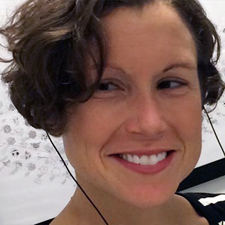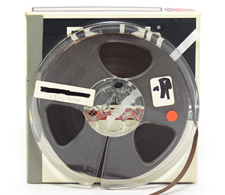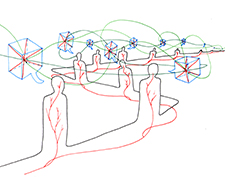Shannon Mattern is Professor at The New School for Social Research. Her writing and teaching focus on media architectures and infrastructures and spatial epistemologies. She has written books about libraries, maps, and the history of urban intelligence, and she contributes a column to Places Journal. You can find her at wordsinspace.net.

Authors | Shannon Mattern
Articles on Amodern by Shannon Mattern
ENCRYPTED REPOSITORIES
Techniques of Secret Storage, From Desks to Databases
Ours is an age of leaks and hacks and fakes. Yet we are not alone in our concern with security and secrecy. Many historians have described the 18th century as an age of secrets – of espionage and secret societies, of new forms of private writing and intimate sartorial storage. This desire for discretion also informed, and was informed by, new techniques of organizing space. I focus here on how historical techniques in cabinetry and locksmithing generated furnishings that served as encryption devices requiring specialized knowledge for their operation. I then examine how contemporary cybersecurity often relies on furniture-related metaphors – lockboxes, crypts, keys – and ask what it means for digital devices to take cues from their wooden forebears.
MEDIA ARCHAEOLOGY OF POETRY AND SOUND
A Conversation with Shannon Mattern
Shannon Mattern’s broad-ranging media archaeological research and teaching attend to textual and literary spaces, sound archives and the materialities of media migration and transformation. This conversation alights on Mattern’s experience and insight and offers an indispensable entreé to the pleasures, risks, stakes and meanings of media historical investigation and hands-on archival work for literary and performance scholars confronting their objects of study as media artifacts. Addressing the practicalities and problems around archival research and archive building, Mattern charts the territory and signals key debates for newcomers to media archaeological ventures with respect to what sound and media archives mean, and the ways we encounter and create them.
EAR TO THE WIRE
Listening to Historic Urban Infrastructures
What might media archaeologists of the Kittlerian variety have to learn from archaeologists of the Indiana Jones school? In studying the networked urban environment, there’s much to be gained by taking up trowels and examining the material artifacts of urban communication. This is particularly true in exploring the history of the “sonic city” – the city of radio waves and public address and everyday conversation. The material spaces in which echoes once reverberated can offer invaluable clues about how our cities (re-)sound. We find that our media histories are deeply networked with our urban and architectural histories, and that, in many cases, these cultural and technological forms are mutually constructed.






